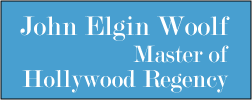Ever since the turn of the last century, as tycoons and wildcatters flocked to what was Indian Territory, ambition has grown like bluestem on the tallgrass prairie. Fueled by money and audacity, local tycoons hired renegade architects like Frank Lloyd Wright and Bruce Goff to build some of the most eccentric structures in America, including houses with octagonal bedrooms and goose-feather ceiling. The most dazzling of all was the Price Tower, one of only two skyscrapers ever built by Wright, a thin pinwheeling, cantilevered design with gold-tinted windows and copper fins that presides over this city of 36,000 with a strange totemic power.
—Richard P. Townsend, Director, Museum of Biblical Art, New York, NY
The city is Bartlesville, Oklahoma. As a child I watched with wide-eyed wonder the construction of this building along with many residences designed by the American architect, Bruce Goff. Architecture became the unchartered territory in my psyche where the only limits were personal ones. Growing up in this community of avant-garde architecture made life worth gossiping about, especially Shin’en Kan, built in stages from 1958 through 1974 as a bachelor pad for Joe Price, designed by Bruce Goff. Strips of plastic rain suspended from the ceiling swayed in the breeze and individually placed goose feathers diffused and softened the light. It had the ability to transport you to another world. Joe Price, now living in Los Angeles, funded the Pavilion for Japanese Art at the Los Angeles County Museum of Art.
Architecture has continued to be a deeply ingrained part of my personal history. Al Beadle (1927-1988) was an American modernist architect residing in Phoenix, Arizona who has been rediscovered for his contributions to Desert Modernism. I purchased a residence designed by this architect in 1981. The house was constructed in 1951 and featured in American Home Magazine, described as a
“modern masterpiece built around a central courtyard.” In the spring of 2014 while working on the La Cienega Design Quarter’s 6th Annual Legends of La Cienega project, I was introduced to the works of architect John Elgin Woolf. The fluidity and elegance of his designs immediately prompted me to know more about the man and his architecture. The result of that introduction can be seen here in the exhibition, John Elgin Woolf: Master of Hollywood Regency
.John Elgin Woolf (1908 – 1980) arrived in California seeking a career in film. Born in Atlanta he sought for himself a role in the film Gone With The Wind
but instead became one of the most influential architects in Hollywood designing homes for clients Cary Grant, Errol Flynn, Judy Garland, Barbara Stanwyck, Ira Gershwin, Fanny Brice, Bob Hope, Lillian Gish, Paul Lynde, Ricardo Montalban, Loretta Young, Katharine Hepburn and Spencer Tracy. He and his partner, Robert Koch, an interior designer, created a new vocabulary for glamorous movie star living since christened Hollywood Regency. This transgressive style had all the elements of a movie set. The mansard roof and the elongated Pullman door were signature elements of Woolf’s design vocabulary, as seen in the many examples presented in this exhibition. Woolf’s brilliance lay in the fact that he operated outside the expected. He had much in common with the surrealists; he fused elements of fantasy with elements of the modern world, and introduced nonconformity of scale and proportion in his projects that allowed masterful manipulation of volume. Along with Robert, together they employed the surrealist technique of the juxtaposition of objects that would typically not be together in a certain situation, or together at all.
The Palos Verdes Art Center is an organization forged by long-term association and support from the Los Angeles County Art Commission, including support for this exhibition. We are privileged to work with an exceptional and inspiring Board of Trustees, whose optimism and ambitions for the exhibition program energize the organization and staff. I would particularly like to thank PVAC Chairman, Nancy Cumming, and President, Don Crocker, for their guidance and immense personal commitment to the Palos Verdes Art Center – along with their unbridled enthusiasm for what we do. I am indebted to the passion and commitment of private and individual supporters of this exhibition, including: Steven Price, Brad Dunning, Lucius Lamar, Ben Storck, and Richard Dupont.
We extend thanks to our Palm Springs and Palm Desert partners including Paul Kaplan Group (Samantha Cohn, Chris Bale, Paul Kaplan), Royale Projects (Rick Royale and Lesley Oliver), The Marrakesh Country Club (Frank Melon and his entire staff), Palm Springs Galleria (Jim Gaudineer), and our beautiful neighbor at Marrakesh, Tania Mellis.
It has been a pleasure to work with the staff of the Art, Design & Architecture Museum, UC Santa Barbara (Jocelyn Gibbs, Susan Lucke and Amber De La Cruz) to realize this exhibition. They have dedicated themselves to providing the loan of the material and have dealt masterfully with the ebbs and flows of preparing for this exhibition. I would also like to extend thanks to our PVAC staff. Without them we would be unable to achieve much of what we do and we sincerely appreciate their sense of adventure, enthusiasm and dedication.
Most importantly, in closing, the architect and his family – the very essence of this exhibition – deserve special and boundless thanks for their extraordinary legacy.
I hope you will enjoy the exhibition and be absorbed, challenged, and inspired to step into the many worlds of John Elgin Woolf: Master of Hollywood Regency.
Joe Baker
Curator
